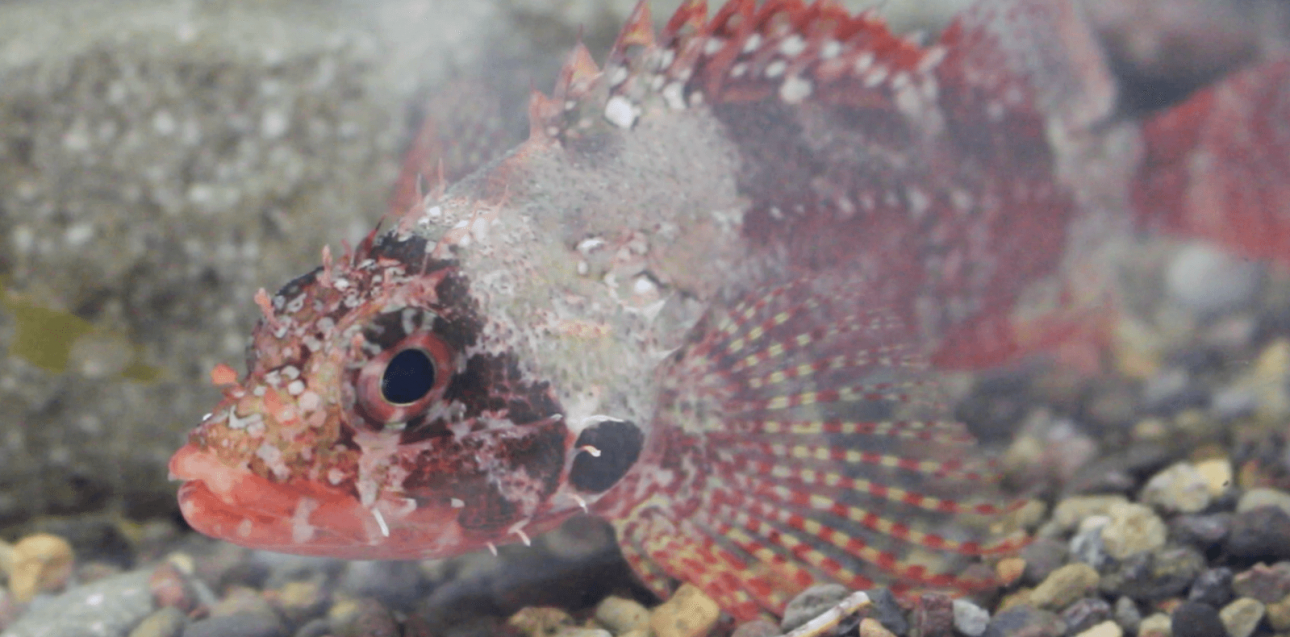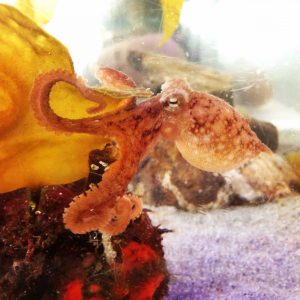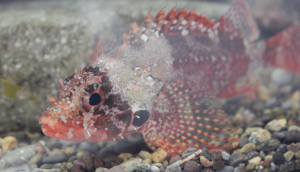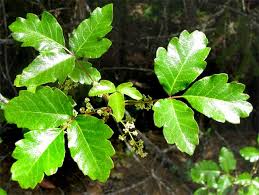
Although both venomous and poisonous animals produce a toxin that can be harmful and even lethal to another organism, the means they go about it is very different. Venomous organisms inject their toxins into other organisms, whereas poisonous ones deliver their toxins when touched or consumed.
Venomous critters typically forcefully and directly deliver their toxins to potential predators or prey by biting, stinging, or stabbing them. Meanwhile poisonous organisms do not deliver their toxins directly: they typically take a more passive approach. They typically wait for direct contact or consumption by potential predators or prey in order to do some damage.
Here on Catalina, a number of organisms utilize venom or poison in order to survive! 
For the Pacific Red Octopus, venom is essential to grab a meal. A red octopus is able to stun and kill their prey by spitting venom onto them. Their venom can even allow them to separate a snail’s flesh from its shell. How crazy is that?!
 Another critter that utilizes venom here on the island is the Scorpion fish. These fish possess venom filled sacs along their dorsal fin to protect and defend themselves against dangers lurking in the waters.
Another critter that utilizes venom here on the island is the Scorpion fish. These fish possess venom filled sacs along their dorsal fin to protect and defend themselves against dangers lurking in the waters.
Round rays are also able to pack a powerful punch by possessing a venomous barb on their tail in order to defend themselves from any potential prey! On the underside of their barb lies a groove that stores its venom. When the ray feels like it is about to encounter danger they will raise their tail and strike their threat; if their barb successfully pierces their threat they are able to release their venom.
 Meanwhile Poison Oak is an organism that relies on poison, rather than venom, to do damage here on the island. A poisonous oil coats the leaves therefore if touched will slowly seep into ones skin and cause an uncomfortable reaction.
Meanwhile Poison Oak is an organism that relies on poison, rather than venom, to do damage here on the island. A poisonous oil coats the leaves therefore if touched will slowly seep into ones skin and cause an uncomfortable reaction.
Sources:
http://www.aquariumofpacific.org/onlinelearningcenter/species/round_stingray
Written By: Alex Feltes


